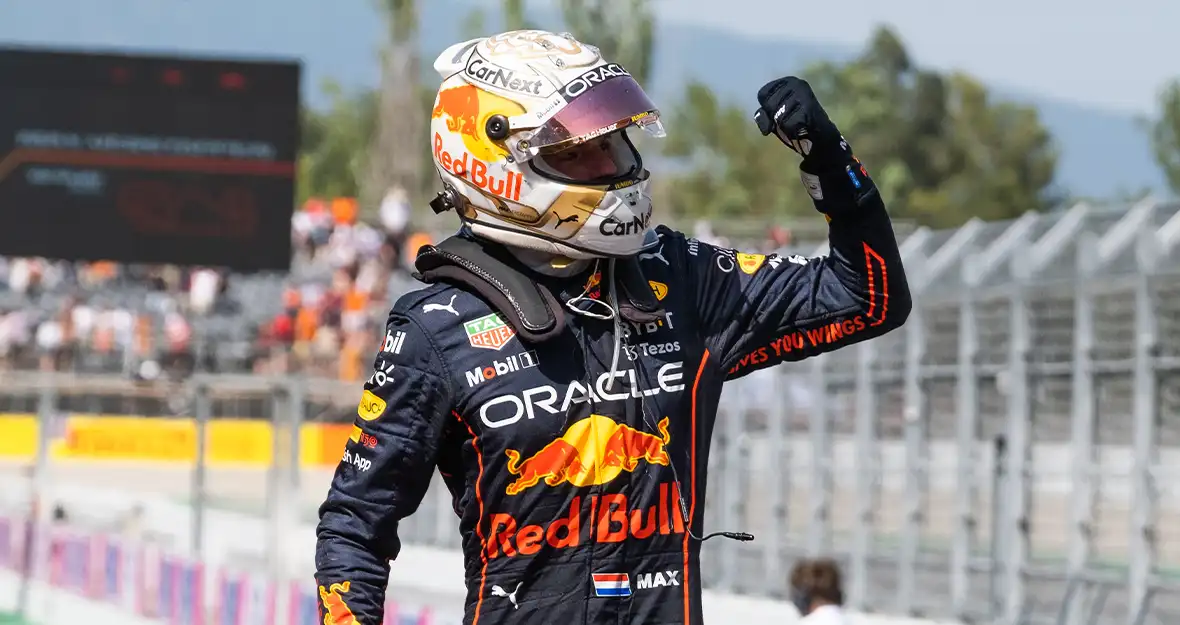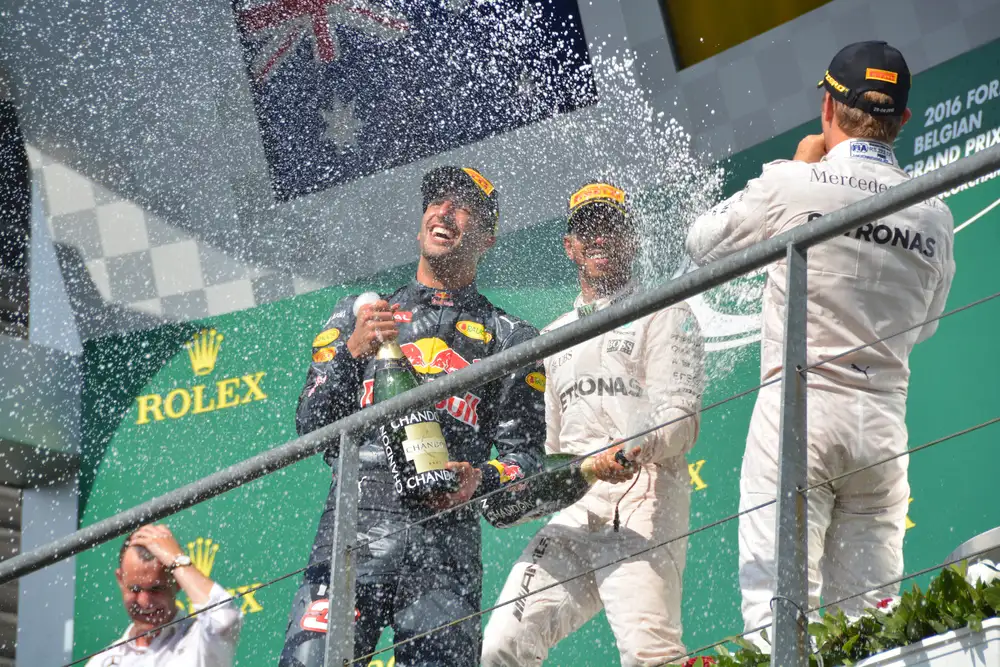For those aspiring to capitalize on the exciting Formula 1 racing bets, it is essential to understand how F1 betting odds are read. The numbers and fractions featured can seem daunting at first; however, this guide will break them down into simple, understandable steps.
From decimal and fractional odds to Moneyline and match betting – this guide will provide all the necessary instructions to be a successful bettor in no time! So without further ado, join us as we jump-start our engines toward revenue-generating gains with F1 betting knowledge.
Table of Contents
How do you read Formula 1 betting odds?
Formula 1 betting odds are usually displayed in positive or negative numbers. To calculate the implied chances of a driver winning, you need to divide 100 by the number displayed. For example, if a driver has +200 odds to win, his implied chances to win the race are 33.33%.
However, this does not necessarily mean that his actual chance of winning is 33.33%, as each driver’s implied chance may exceed 100% combined. The payout for any given bet would still be based on the calculated percentage rather than the true likelihood of success.
Key Takeaways
- There are three main types of Formula One wagers: fractional, decimal, and Moneyline. Each type expresses probability differently, so knowing which format you’re looking at is essential.
- Fractional odds are the most common format for Formula 1 betting odds. They show the potential payout in relation to the stake. For example, 10/1 means that for every £1 placed, you will win £10 plus your stake back when your prediction proves correct.
- Another popular format is decimal odds. It shows the total payout, including the stake. For example, 2.5 would show that for each pound staked by a customer, they would receive two pounds and fifty pence in returns if their prediction was correct.
- Moneyline odds are expressed as a positive or negative number representing the required payout or stake.
- Match betting odds refer to the probability of one driver winning against the other. It can be presented as 8/11 or 3/1.
- Positive odds are associated with the underdog. They indicate the potential payout for a wager, while negative odds are associated with the favorite. They indicate the amount of money that must be bet to win a certain amount.
- Keep in mind that odds can change as the race approaches, and as the race progresses. It is important to stay informed about the latest odds and the factors that may affect them.
- Additional factors can impact the outcome of a race, such as injuries, weather conditions, or team news. Pay attention to these details before placing your bet to give yourself an advantage.
- Implied probabilities can be calculated by multiplying the decimal number by 100. This will give you an idea of the likelihood of a win according to bookmaker predictions. Use this information to evaluate the potential value of different bets.
- When evaluating potential returns, it’s essential to consider multiple outcomes and possibilities. Low-chance outcomes with high potential rewards are worth exploring further.
Formula 1 betting odds +/-X
Formula 1 betting odds +/-X is a way of expressing the implied probability in sports wagering. In today’s world, many online bookmakers use decimal notation with two decimal places (e.g., 2/1) to express odds.
But sometimes fractional notation (e.g., 3/4) or American-style Moneyline can also be used for certain types of bets that involve point spreads or lineups (e.g., matchups). The term “+/-X” represents any positive number after the sign (+/-) plus its corresponding negative number before the sign (-).
Example 1: You bet $100 on -150
If you bet $100 on a driver or team with -150 odds, and they end up winning the race, you would win $66.67.
Here’s the calculation: (100 / 150) * 100 = 66.67
This means you would earn a profit of $66.67 on your $100 wager. If the driver or team you bet on does not win the race, you will lose your $100 wager. It is worth noting that this represents an American odds format, and different countries might have different formats.
Example 2: You bet $100 on +100
When the odds are given as a positive number, such as +100, it means that for every $100 you wager, you will receive a payout of $100 plus your original bet if your pick wins. So if you bet $100 on a driver with +100 odds and that driver wins the race, you will receive a payout of $200 (your original $100 bet plus $100 in winnings).
Formula 1 betting odds X/X
Fractional odds often referred to as “British odds” or “UK Odds”. They are generally represented in the form of a fraction. For example, 3/1 or 7/2. The numerator indicates the amount you will earn when your bet is successful, and the denominator reflects how much money you need to wager for that payout.
Example1: You bet $100 on 2/1
If you place a $100 bet on 2/1 odds for a Formula 1 race, it means that your predicted driver must win the race in order to receive a payout. The payout is calculated by multiplying the wager (in this case, $100) by the odds (2/1). In other words, it would be $100 * 2/1 = $200 + $100 = a total of $300; this amount includes your original bet and winnings. If the driver does not take first place, your initial wager will be lost.
Example 2: You bet $100 on 13/2
If you place a wager of $100 on 13/2 odds for an upcoming Formula 1 race, it signifies your belief that the chosen driver will win. If this is successful, you will be rewarded with total winnings of $750. Comprising of your original stake and a payout amounting to $650 from the calculated fractional odds (numerator/denominator). So in this case it would be $100 * 13/2 = $650 + $100 = $750. Nonetheless, in case of an unfortunate or opposing outcome, your bet money of $100 shall not be returned and thus lost.
Formula 1 Betting Odds Compared to other Betting Odds
Similarities
- Like all sports betting odds, Formula 1 odds are used by bookmakers to set the likelihood of an event occurring. Also to balance their book by encouraging bets on all possible outcomes.
Differences
- Variety of tracks and weather conditions: Formula 1 races are held on various tracks and in weather conditions which can play a big role in the outcome of the race.
- Level of competitiveness: The formula 1 team’s competitiveness level can vary from season to season which affects the odds.
- Niche Sport: Formula 1 is considered a niche sport, with a smaller number of events each year and less mainstream coverage in some countries.
- Representation of odds: Formula 1 betting odds may be represented in different ways than other sports.
Importance of Research
- Understanding the odds representation: Before placing a bet, it’s important to understand the odds and the way they’re represented, as well as the rules of the betting platform you’re using.
- Doing your own research: It’s important to do your own research on the drivers and teams in Formula 1 so you can make informed decisions about where to place your bets.
Frequently Asked Questions
Why would you bet on negative odds in F1?
What bet is the most popular in F1?
Conclusion
Learning how to read Formula 1 betting odds takes patience and practice – but with a few simple steps, it can become second nature in no time at all. It’s important to note that while they may look intimidating at first, there’s nothing complicated behind them – just simple math!
Familiarizing yourself with different types of bets (such as outright winner or top finisher) as well as understanding positive/negative (+/-) symbols associated with each probability percentage presented by bookies make it much easier for punters to find lines that work for them. Finally, don’t forget what these experienced bettors know: Set yourself a budget before starting any type of wagering activity and always strive for long-term profit rather than short-term wins.
Article sources
Learn more about Formula One
Want to learn more about F1? Then visit our Formula 1 glossary and dictionary.




